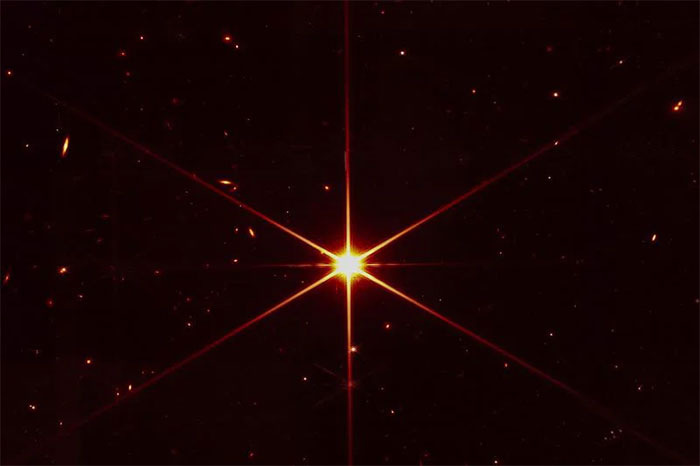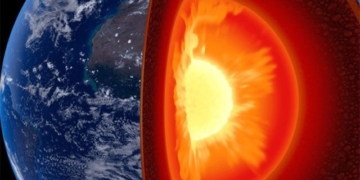The new space telescope from NASA has captured images of a star located 2,000 light-years away from Earth, surrounded by ancient galaxies.
The images, released on March 16, from NASA’s James Webb Space Telescope, are a test shot, aimed at examining the effectiveness of the telescope’s 18 hexagonal mirrors working together to create a single coordinated image taken 1.6 million kilometers from Earth, according to AP.
Scientists have reported that the telescope is performing better than expected.

The image released by NASA on March 16, sent from the James Webb Space Telescope, shows the star 2MASS J17554042 + 6551277 along with surrounding galaxies and stars.
The latest test image from NASA targets a star 2,000 light-years away from Earth (one light-year is equivalent to 9.7 trillion kilometers).
The mirror shape of the James Webb Space Telescope and its filters make the star appear redder and sharpen the rays of light. The background surrounding the star is particularly striking.
Jane Rigby, a scientist on the Webb project, stated: “You can’t help but notice the thousands of galaxies behind that star, it’s truly beautiful.”
These galaxies are believed to be billions of years old. Scientists hope that the Webb telescope can help humanity see images of galaxies that formed just “hundreds of millions of years” after the Big Bang, Rigby said.
The James Webb Space Telescope, valued at $10 billion, is an advanced telescope developed from the Hubble Space Telescope. The Webb telescope was launched into space from South America in December 2021 and reached its designated position in January.
This device uses high-resolution instruments to “look back” at the 13.5 billion-year history of the universe, when the first stars formed after the Big Bang.


















































